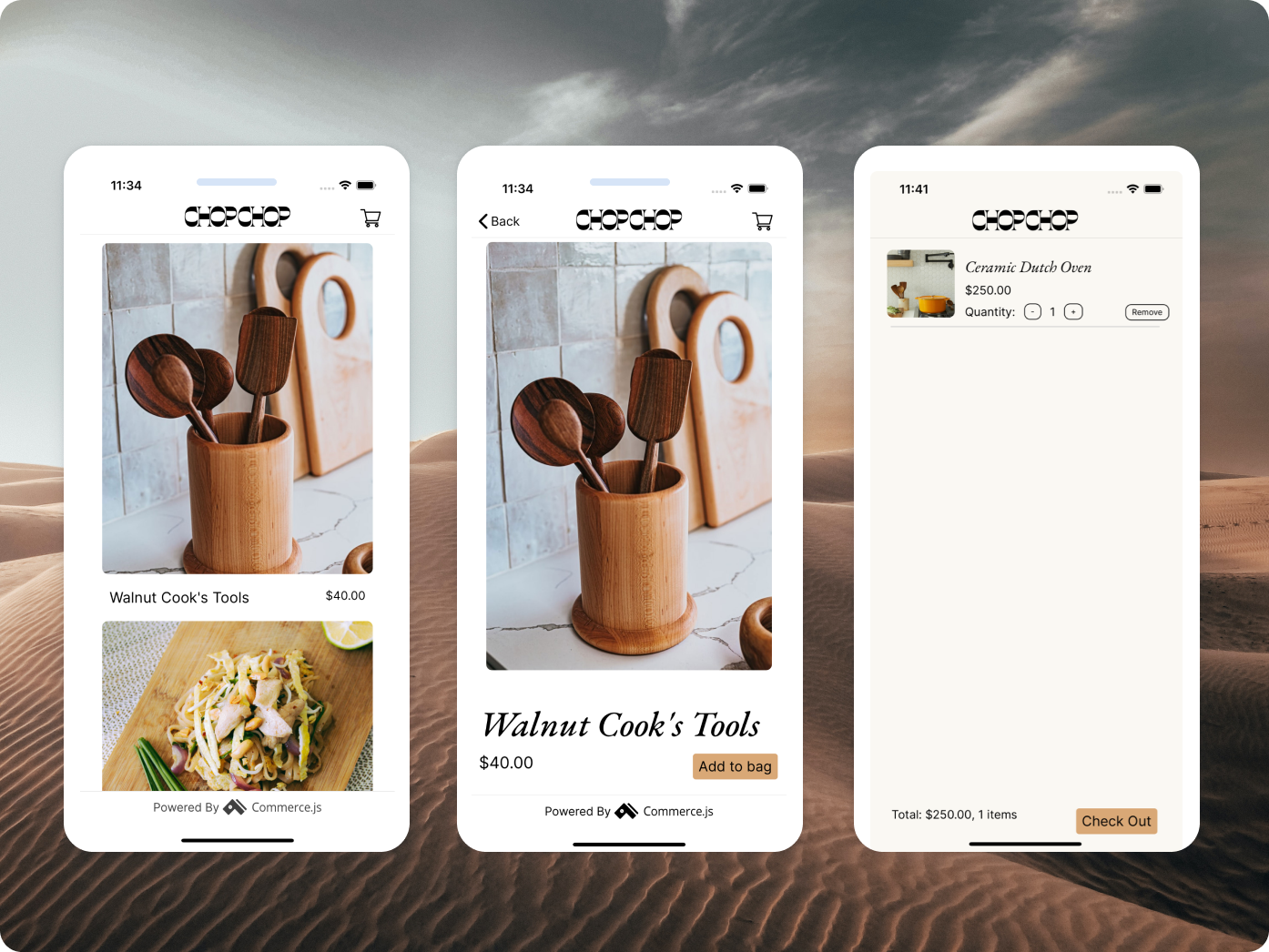Integration Overview
In this guide we'll introduce how to build a native mobile commerce application with Ionic and Commerce.js.
See the project on GitHub
A live web demo can be seen here

Introduction
ChopChop is our beautifully designed, elegantly developed demo store and starter kit that sells fine tools for thoughtful cooks. We’ve created a premium brand with a commerce experience to match, now ready to be use natively accross iOS and Android. Read more about resource on the Commerce.js blog.
🥞 ChopChop Native Stack
Manual installation
Clone the project, then get started by installing the dependencies, and starting the dev server.
yarn install
yarn start
Once the server is running, it'll open up in your browser automatically, start editing the code, and enjoy!
Testing on native
This project can be built for either iOS or Android using Capacitor. Capacitor makes it easy to build web applications that can be ran natively.
Ensure capacitor is included in the project by running:
npx cap init [appName] [appId]
Also, ensure the project has been built once by running:
ionic build
Next, add a desired platform to the project:
npx cap add ios
npx cap add android
From here, we can run the project natively using one of the following commands:
ionic capacitor run ion -l --external
ionic capacitor run android -l --external
Ionic will build the project in your platform of choice, and then you can run it in a simulator or on device from that point.
If you find that your project has not updated correctly in the native build, run
npx cap copyto ensure the native outputs have the latest built code.
License
This project is licensed under BSD-3-Clause.